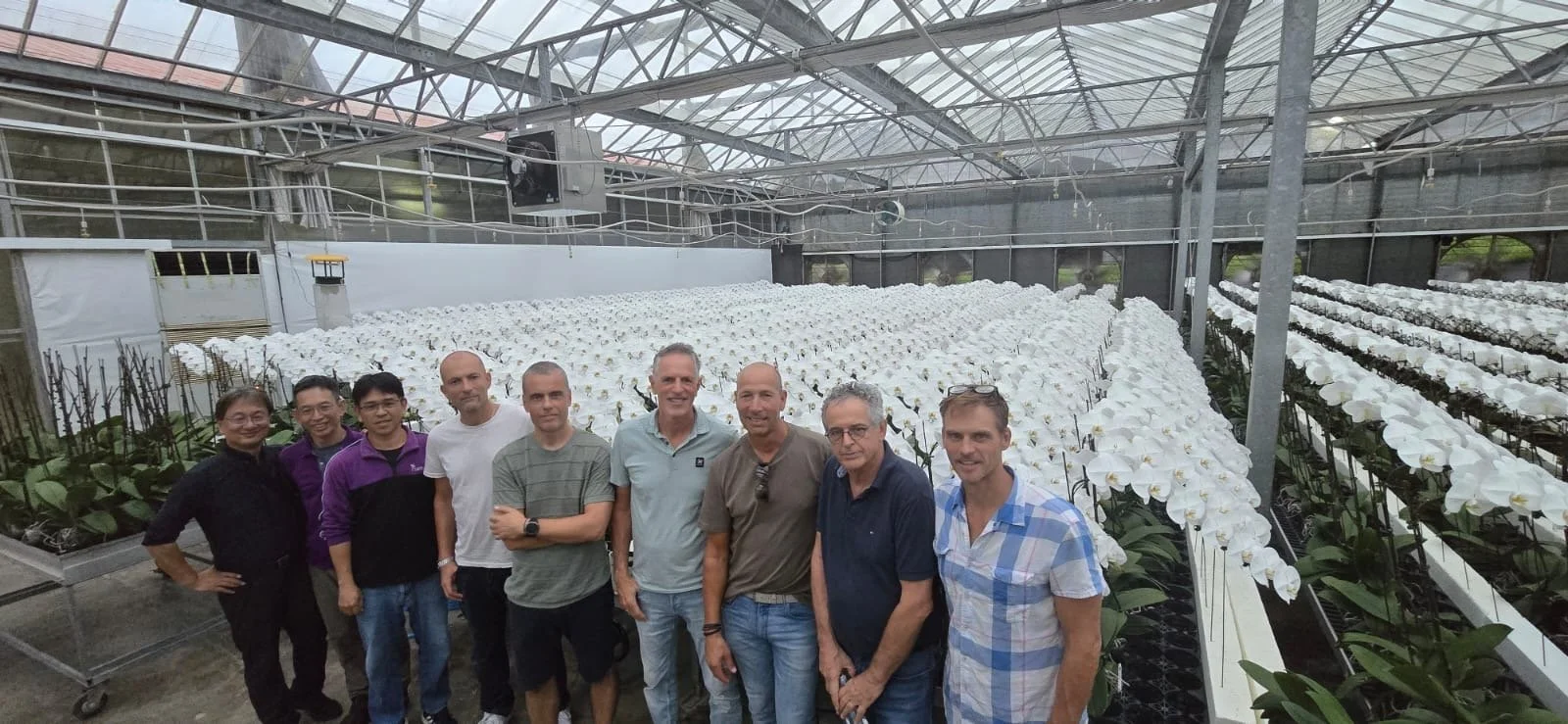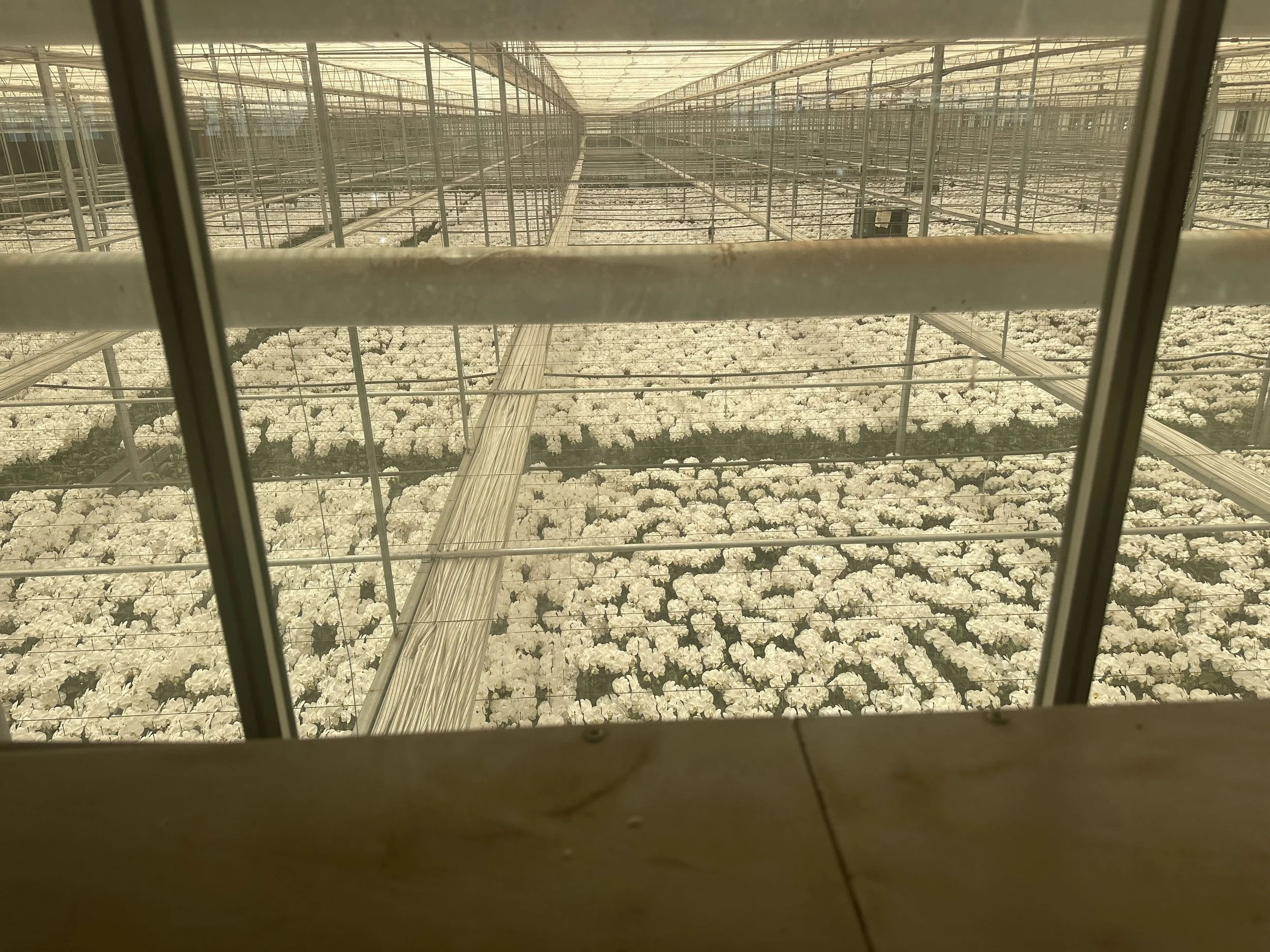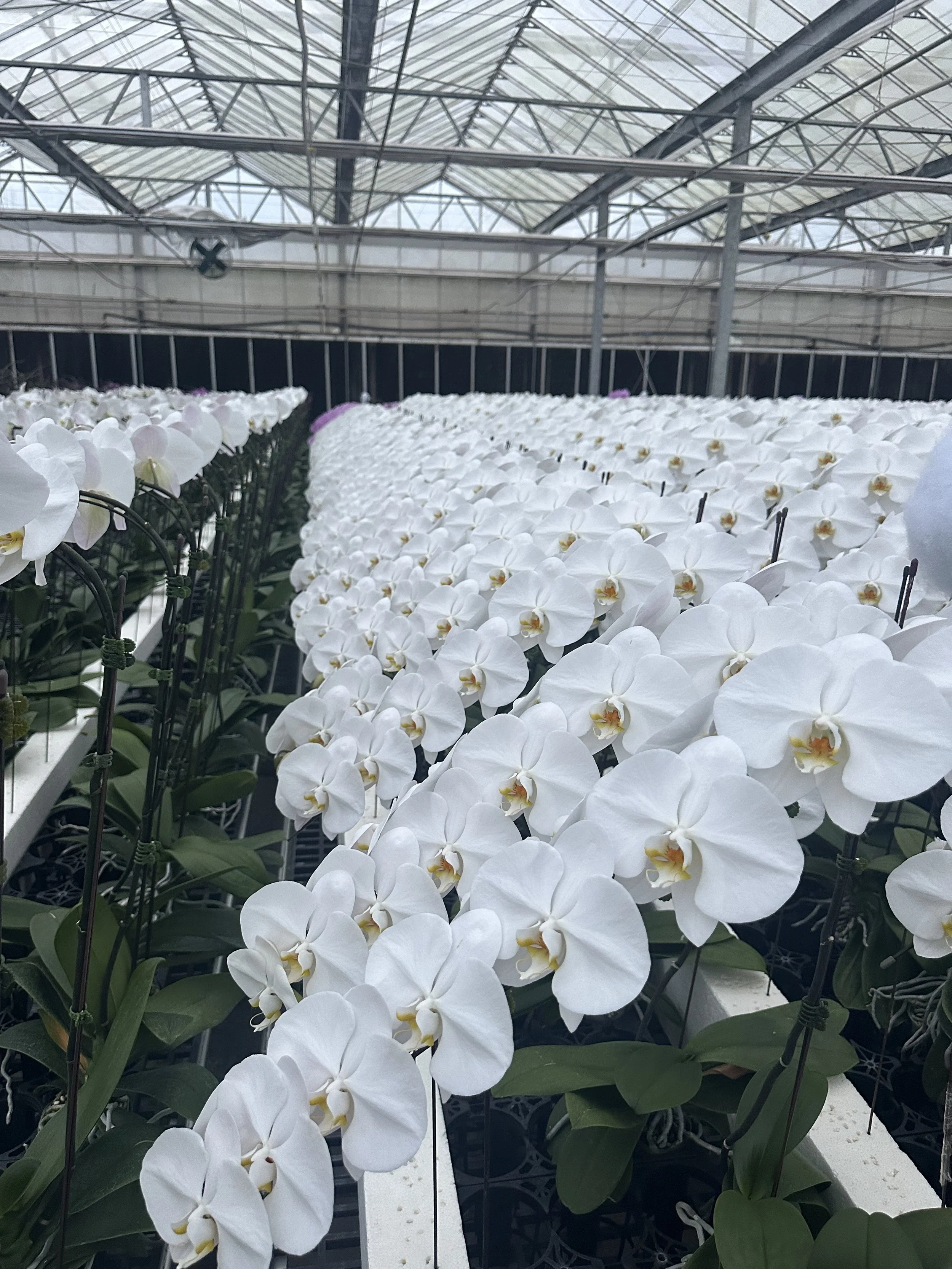Global Inspiration: Insights from Vietnam & Japan Orchid Markets By Toine Overgaag, President – Westerlay Orchids
I am fortunate to part of a group of commercial orchid growers from around the world representing the nine different countries. Every September we tour orchid production and wholesalers in different parts of the world to see what insights we can learn to apply to our own businesses. In the past we have traveled to the Netherlands, Italy, Slovenia, Brazil, Guatemala, Mexico, Canada, and I have hosted in California.
This year our group member from representing Vietnam hosted us there and also arranged for travel to Japan. There was a lot to see and learn from these very interesting, culturally rich countries.
The growers in the group represent the Netherlands, Denmark, Slovenia, Canada, Brazil, Guatemala, Vietnam, Taiwan and USA.
In Vietnam, we traveled to the highlands in an area called Da Lat. There at elevations exceeding 4000’, temperatures were substantially cooler and more conducive to all kinds of horticulture than the steamy lower elevations. There, our host Royal Base Orchids, had sophisticated greenhouses producing 2+ million phalaenopsis orchid plants for export, 2+ million phalaenopsis stems also for export, and just under a million plants for the local market.
I was very impressed with the knowledge of the Taiwanese management team and rigor of the production process. Plant health was excellent and disease nearly non-existent. The excellent, highland equatorial climate also made an impression. With consistent light levels and steady, temperate year-round climate, it is a nearly ideal place to grow orchids.
We also visited wholesalers in Ho Chi Minh City. The local preference, in contrast to our US market, was for multiple, colorful large flowered orchids combined in large arrangements gifted typically for birthdays, weddings, and other celebrations. I was also stunned to hear that the domestic market, in a large but still developing nation of 100 million people was almost 20 million orchids per year, comparable on a per capita basis to the US.
After two and half days in Vietnam we traveled, red-eye, to Tokyo. Japanese orchid production was surprising on several levels. First, the market was much smaller than expected, despite a developed economy of 123 million. Total consumption of orchids was just over 10 million unit per year. Further, between 80 and 90% of these orchids are for a hyper specific market and arranged in a hyper specific way. This would be usually 3, sometimes more, large flowered (almost only) white orchids each trained to have a single long spikes facing forward in an elegant swan-like arch. These arrangements would almost only be given as business gifts for promotions, year-end meetings, grand openings etc. While flowers and flower arranging are important in Japanese culture, orchid plants are largely limited to a very specific niche.
Also interesting was the very small scale of orchid production. We were told that there were nearly 200 orchid growers in Japan but that only 50 or so were “larger”, producing 100,000 or more per year. In our group where 50,000 units per week was more standard, this was shocking.
What I have neglected to mention to this point, whoever, is that these plants were FLAWLESS. What was lacking in variety of color and size was countered by perfect shape, and form and huge flowers. The Japanese market focus on quality was impressive. This focus leads to high unit costs but is rewarded with remarkable prices. The retail for a typical 3 plant arrangement as described above was about US$75.
As a group we discussed at length the Japanese technique and style. The conclusion from most of the group was that this kind of quality would be too expensive to achieve in their markets and would not be compensated. I, however, came to the conclusion that in the US, certainly on the west coast, there is a viable market for these plants or some variation on them. We are getting to work on exploring this.
As a group we are already discussing next year’s destination. Perhaps China or India. I am sure it will be eye opening either way.




